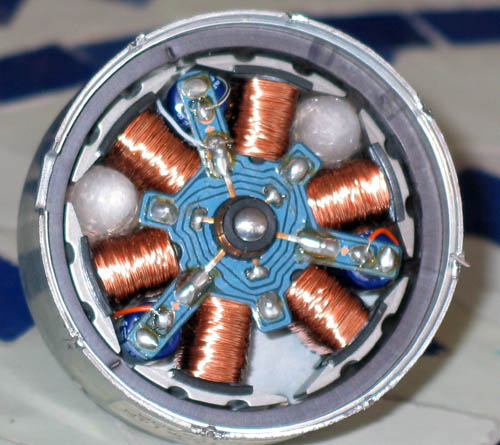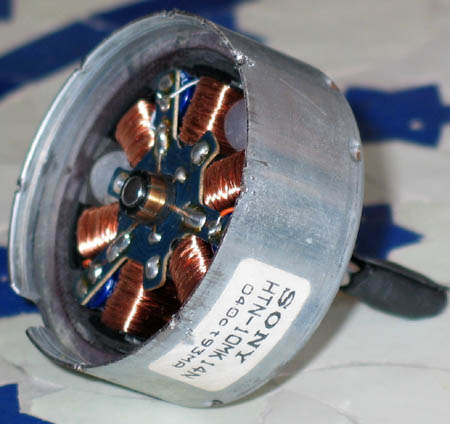Visible Motor
I had always wanted to see how a motor works, to see it in action. But this goal seemed hard because motors need a magnet ring – not good for visibility – and spin pretty fast when they are working.
But then I hit on two ideas. First, the motors I used to make the spinning signs are wide and flat. I could take off the metal base and replace it with a clear plastic disk. This will let me see how the brushes mate with the commutator.
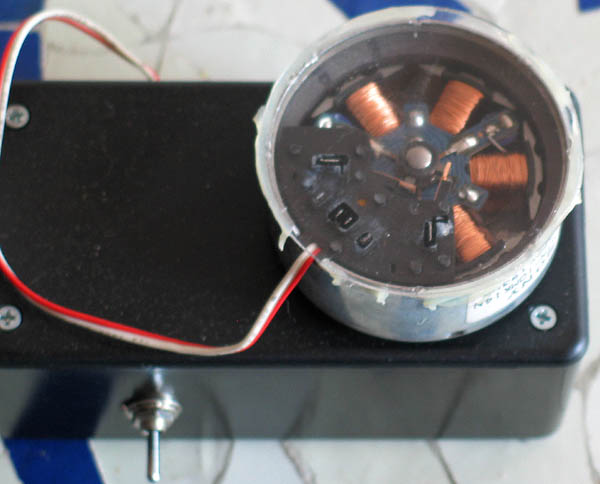
Second, I could use a bipolar LED to indicate the direction of current flow. Specifically, I used a 2-wire bipolar LED which glows green when the current flows one direction, yellow when the current flows the other. I glued the LED to the side of an armature, and wired it to the armature’s connections to the commutator. You can see the wiring in the upper right hand side of the above photo, and just barely see the led on the lower right hand side. Although there are six arms in this motor, there are only three armatures. Each armature is split into two arms. When I turn on the motor, the LEDs indicate the direction of current – and therefore the magnetic domains of the magnet ring. There are two pairs of N-S domains, just like the books say.
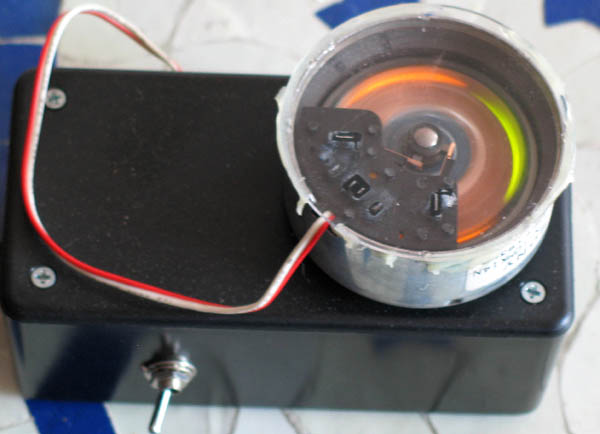
The box is just a convenient mount, all it contains is a bi-directional switch. You can change the direction of current, and see the lights flip. If you switch off the motor, the LEDs will light as long as the shaft spins, showing that the motor is also a generator. If you look closely at the brushes, you can even see them sparking. My brush mounts are not nearly as precise as the factory’s. For a last photo, a flash catches the motor in action.
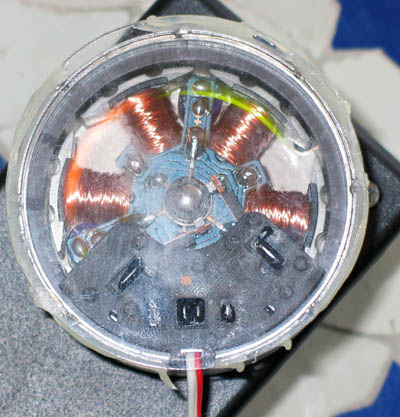
Generator toy
With the visible motor, I can spin the motor shaft by hand and get the LEDs to light up. This gave me an idea for a toy. I had some jumbo-size red-blue-green LEDs lying around. They fit perfectly between the motor arms. I glued them in and wired them up. The result is quite nice. Red, green, and blue LEDs have increasing voltage drops. So when you spin the shaft, red lights first, green second, blue last. The frosted LED lens mixes the colors, so the effect is that the color changes with the angle and also with the shaft speed. Unfortunately the effect is brief and not that bright (the LEDs are rated at only about 100 mcd) so I’m pessimistic about catching it on camera. Below are pictures of the toy. You can see in the side view that I wrapped the shaft in tape to make it easier to spin.
